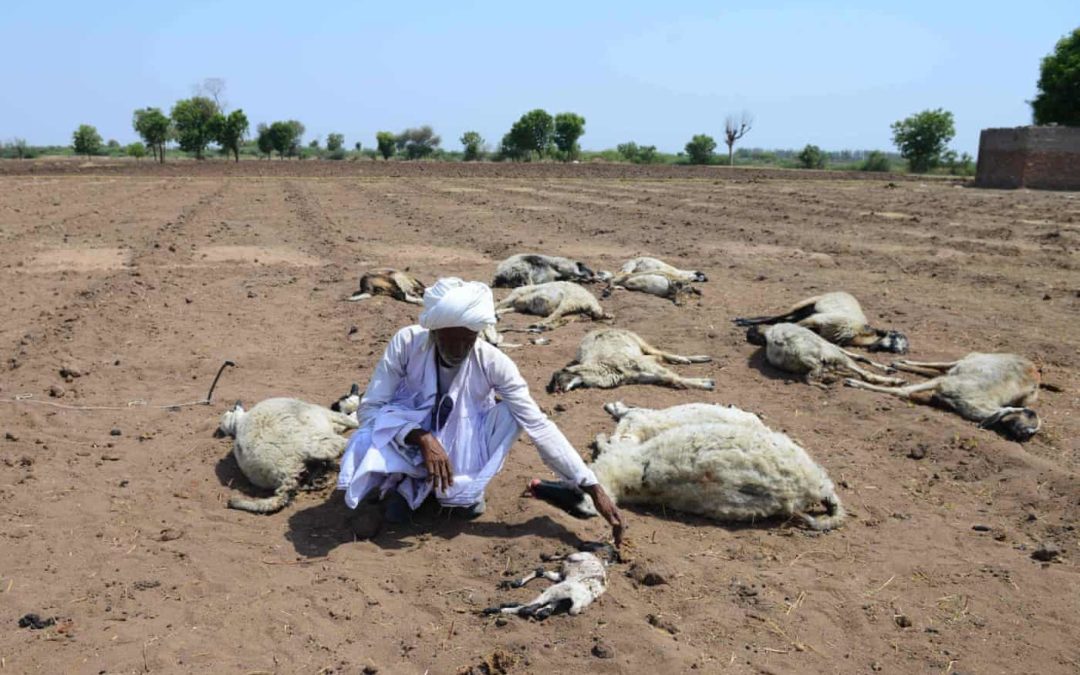SOURCE: The Guardian
DATE: June 12, 2019
SNIP: Hundreds of Indian villages have been evacuated as a historic drought forces families to abandon their homes in search of water.
The country has seen extremely high temperatures in recent weeks. On Monday the capital, Delhi, saw its highest ever June temperature of 48C. In Rajasthan, the city of Churu recently experienced highs of 50.8C, making it the hottest place on the planet.
Further south, less than 250 miles from the country’s commercial capital, Mumbai, village after village lies deserted. Estimates suggest up to 90% of the area’s population has fled, leaving the sick and elderly to fend for themselves in the face of a water crisis that shows no sign of abating.
Wells and handpumps have run dry in the 45C heatwave. The drought, which officials say is worse than the 1972 famine that affected 25 million people across the state, began early in December. By the end of May, Hatkarwadi had been deserted with only 10-15 families remaining out of a population of more than 2,000.
With 80% of districts in neighbouring Karnataka and 72% in Maharashtra hit by drought and crop failure, the 8 million farmers in these two states are struggling to survive. More than 6,000 tankers supply water to villages and hamlets in Maharashtra daily, as conflict brews between the two states over common water resources.
By the end of May, 43% of India was experiencing drought, with failed monsoon rains seen as the primary reason. The country has seen widespread drought every year since 2015, with the exception of 2017.
Groundwater, the source of 40% of India’s water needs, is depleting at an unsustainable rate, Niti Aayog, a governmental thinktank, said in a 2018 report. Twenty-one Indian cities – including Delhi, Bengaluru, Chennai and Hyderabad – are expected to run out of groundwater by 2020, and 40% of India’s population will have no access to drinking water by 2030, the report said.
This year’s south-west monsoon, responsible for 80% of the country’s rainfall, is projected to be delayed and smaller than normal.

